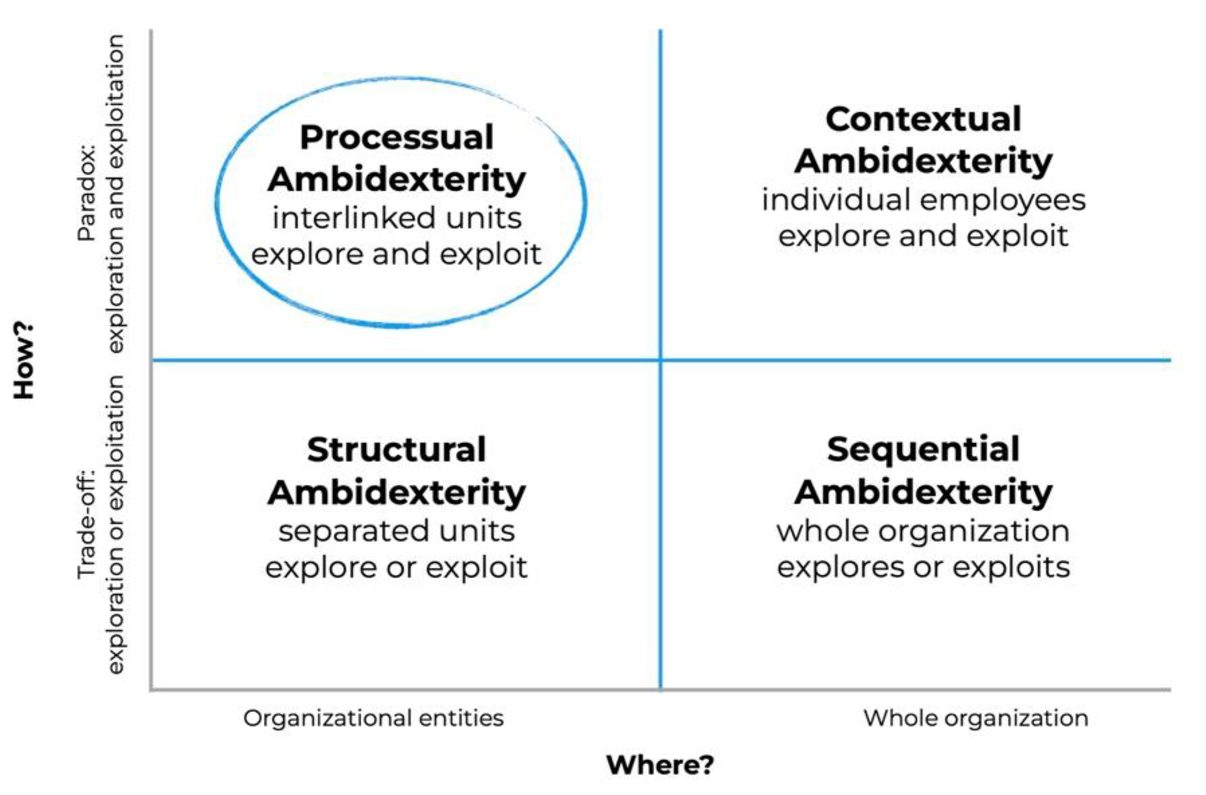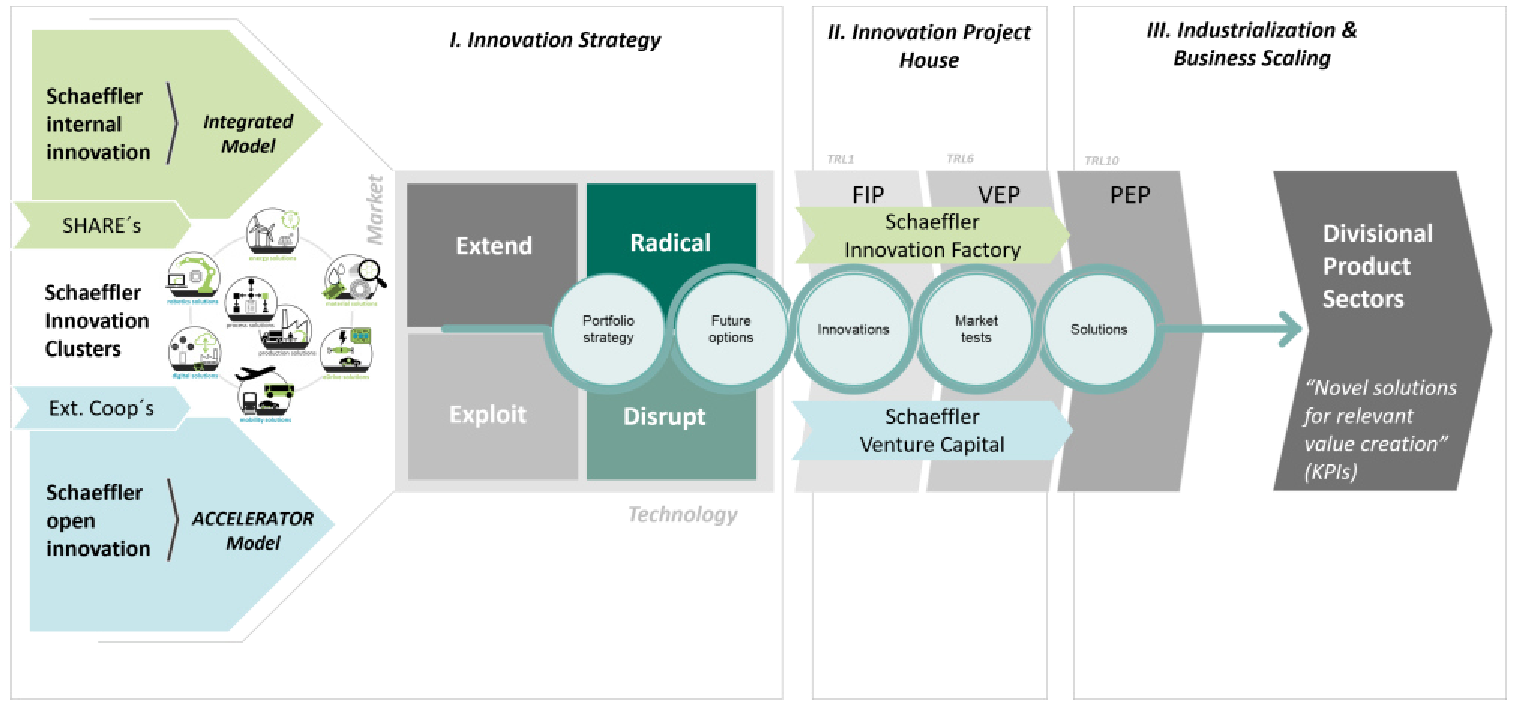Rapid change in technology, environment and geopolitical systems is resulting in ever shorter cycles of competitive advantage for established companies, as their strategic fit to the environment diminishes with each change.
The Schaeffler Group is a global automotive and industry supplier based in Germany, with a turnover of 15.8 billion Euro. It found that its traditional methods of leveraging its corporate values for competitive advantage were not sufficient. In an environment of increasing volatility and uncertainty it needed to become ambidextrous, to continuously develop new competitive advantages while simultaneously strengthening its core business.
A case-study of how it adopted a new “Innovation-to-business” strategy was discussed in a paper presented at the 2023 ISPIM Innovation Conference. Here we summarise the paper and ask the co-author Dr Lysander Weiss of the HHL Leipzig Graduate School of Management about the implementation of the new approach.
The challenge – diminishing competitive advantage
Competitive advantage has been defined as the monetary, or non-monetary value difference between a company’s market offer and that of competing offers. In the past, established companies with strong brands and reputations have concentrated on the exploitation of specific technologies, processes and customer relationships to maintain their competitive positioning.
However, they are increasingly finding this is not enough and new technology/market combinations are required that are new to the business and its industry. Developing these new market opportunities can be a major challenge, if the company is organised for the efficient exploitation and incremental optimisation of the existing business.
So a new approach is required for R&D and new product development to ensure future sustainable growth.
‘Innovation-to-business’ is such an approach. Through the development of a relevant set of dynamic capabilities and organisational levers it enables the organisation to leverage existing competitive advantages to enable the strategic renewal of the parent company.
A successful innovation-to-business strategy
In their paper, Weiss et al outline three elements of a successful innovation-to-business strategy:
- Dynamic capabilities for strategic innovation – sensing, seizing, transforming as defined by Teece but also the authors have found scoping and configuring.
- Organisational ambidexterity – to enable simultaneous exploration and exploitation with newly specified ‘processual ambidexterity’ as most relevant form for R&D unit – several organisational options are available
- Use of specific organisational levers – seven are defined in the paper
Schaeffler adopts an “Innovation-to-business” strategy
The paper describes how Schaeffler introduced an ‘Innovation-to-business’ strategy to increase value creation for its customer. It focuses on organizational measures in three main levers:
- People – the company prioritised innovation, agility, efficiency within its corporate culture and implemented an empowering organisational structure. It developed an ambidextrous organisational structure by creating innovation clusters aligned to new market opportunities, while involving relevant stakeholders to ensure leverage of existing competitive advantage
- Portfolio – it introduced structured, visual, innovation portfolio management. The strategic evaluation of the projects uses a defined portfolio strategy, with three project types categorised according to maturity
- Process – a process was defined from R&D through to transfer to production and commercialisation, that included customer-centric methodologies and specific decision gates.
We asked Dr. Lysander Weiss about the study
Q. How did Schaeffler manage its portfolio before? Was the visual portfolio management new to the company?
A. Before, there was simple project management, but not in the sense of an agile portfolio management. Although, a first version of the visual portfolio management had been introduced 2 years prior, it was not yet in active use for the management of the portfolio. Within the new Innovation-to-business strategy, it was fully revamped with new KPIs etc and introduced as a decision-making framework. This enabled all the projects to be evaluated for the first time.

Q. Is there evidence of the success of this new strategy?
A. As the strategy is still in implementation, the early successes are only visible within the organization. A number of observations include: a higher legitimacy for R&D / innovation within the organisation; a more efficient and targeted portfolio; a better common understanding of innovation and its strategic value contribution.
There are also some promising first projects being developed within the new system, specifically in the domains of robotics and solar.
Q. How long did the change process take?
A. The change process took approx. 2 years and is still ongoing. A number of aspects were implemented such as cluster/project organization, portfolio management, and culture and others such as the systematic processes and digital workflows are still in the execution.
Q. Did Schaeffler already have an empowering organisational structure or did it make changes?
A. The structure was rather traditional. The more empowering project organization with clusters was introduced early on to include higher flexibility and self-organization, This will in the future be aligned with the portfolio-steering and defined organizational interfaces. The overall structure is still rather hierarchical and efficiency-based, thus the project organisation for R&D is an exception in the company.
Q. Are there any learning points – did they do a pilot first or implement across the whole company?
A. Although this restructure was primarily for the R&D organization, which is at the centre of the company, it does include people from the business units so the impact of the new strategy extends wider. As yet the organisation of other parts of the business are not influenced, but this may follow. The R&D organisation comprises several 100 people with 100s millions of budget so it can be seen as a possible ‘nucleus’ for the rest of the organisation.
Responses from Dr. Lysander Weiss, Senior Research Fellow, Strategic Entrepreneurship Research Group, and Chair of Strategic Management and Digital Entrepreneurship at HHL Leipzig Graduate School of Management.
Read the paper
Find out more about Schaeffler’s strategy at schaeffler.com/en/strategy



